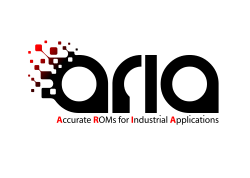The purpose of the secondment was the definition of fluid dynamic problems related to wind turbines and in particular with regards to noise pollution aspects.
During the secondment, after an in-depth discussion with the company, noise pollution from wind turbine was highlighted as a topic of interest for both. This aspect causes significant economic damage to the company, as if the wind farm is near a residential area, energy production is often stopped at night.
Considering the subject, the University of Trieste showed the tools it develops to analyze noise propagation, i.e. aeroacoustic characterization of wind turbine. The classical characterization of noise generated by rotating objects is performed with acoustic analogies, particularly with the solution of the Ffowcs Williams and Hawking’s equation. The research group of University of Trieste developed a novel methodology, defined as Full Acoustic Analogy, which coupled the classical methodology with the solution of the acoustic wave equation in the far field. This approach allows to model the propagation of acoustic waves in complex environments with varying density and speed of sound, obstacles, and morphology.
Starting from the fluid dynamic solution of a scaled wind turbine, noise propagation can be computed in a realistic environment. By using a high-fidelity fluid dynamic approach, such as the Large Eddy Simulation (LES) technique, we can accurately characterize the acoustic signatures of wind turbines. This method enable us to reproduce the fluid vortex structures and analyze the spatiotemporal evolution of the wind turbine wake, including the transition from near to far wake and the mechanisms causing instability in the tip and hub vortex. By understanding these complex flow phenomena, we can better understand the noise generation mechanism, including the pressure fluctuations on the blades. This approach is a significant advancement in the field, as the most common method used in wind turbine aerodynamics research is the actuator technique. Moreover, the low order model for acoustic propagation allows to obtain information about noise pollution far from the source.
We therefore interfaced with the company to define the type of data to which they have access, to understand how it can be used for the numerical model and for its validation.



